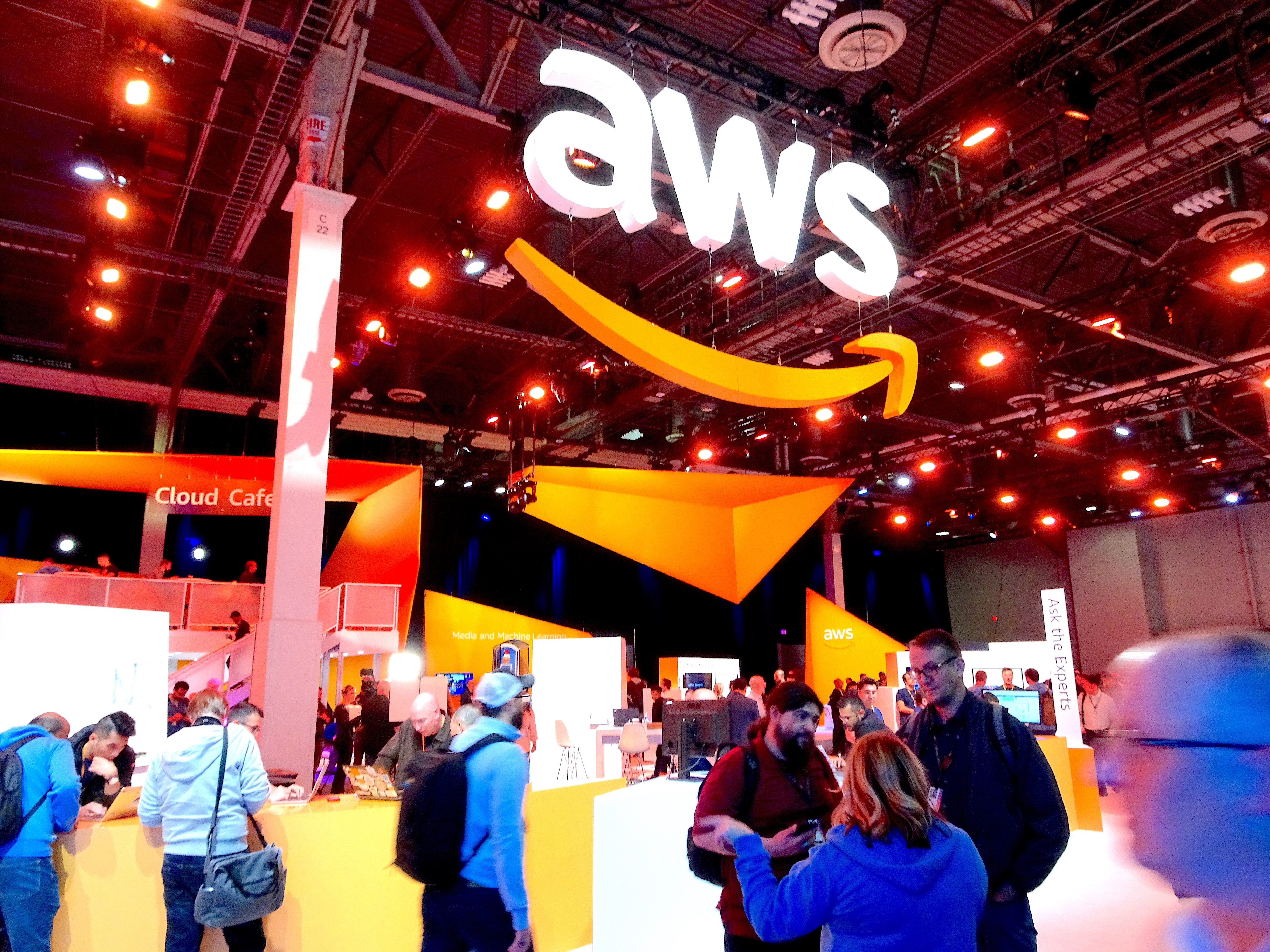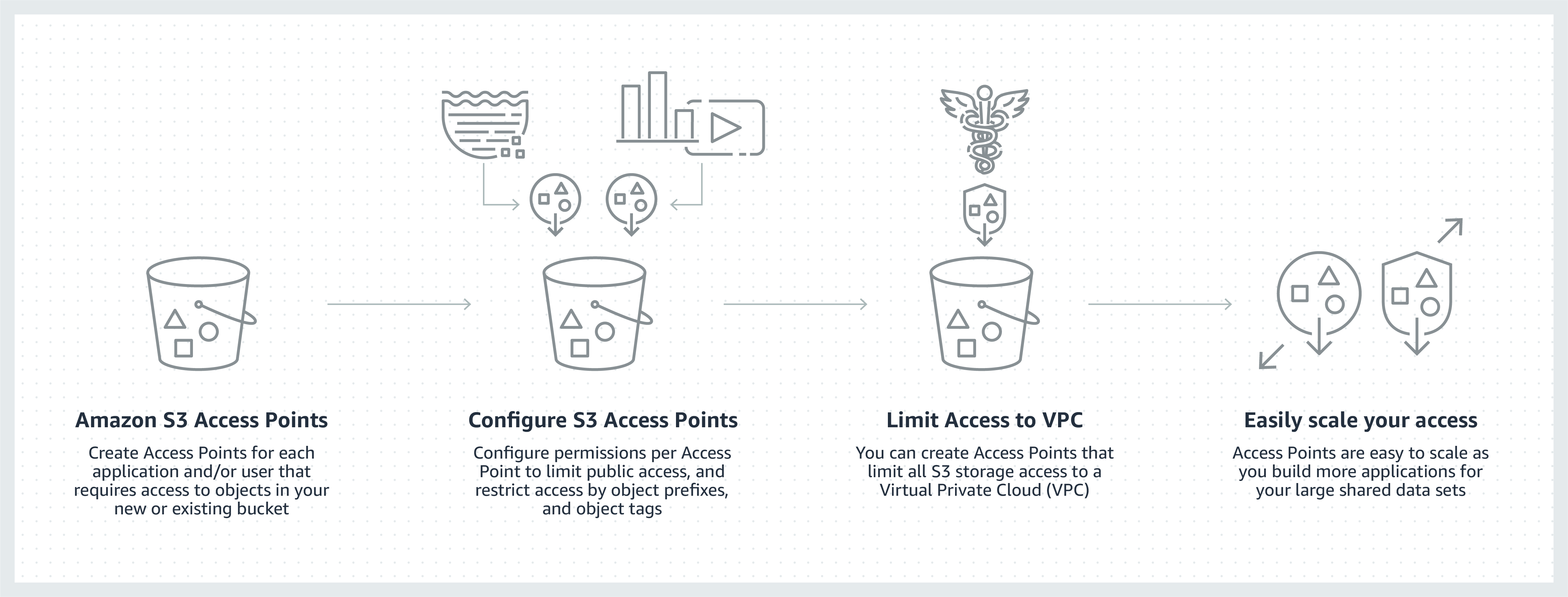 CLOUD
CLOUD
 CLOUD
CLOUD
 CLOUD
CLOUD
Amazon Web Services Inc. today introduced a new service called Amazon S3 Access Points that lets customers manage shared datasets.
The service, announced at the annual re:Invent conference held by Amazon.com Inc.’s cloud computing company, allows users to customize access permission rules for each application. That’s intended to help simplify the management of data access at large scale for apps that use shared datasets on the Amazon S3 storage service.
“S3 Access Points are unique hostnames with dedicated access policies that describe how data can be accessed using that endpoint,” Brandon West, AWS’ developer evangelism leader for the Americas, said in a blog post describing how to get the service up and running. “Before S3 Access Points, shared access to data meant managing a single policy document on a bucket. These policies could represent hundreds of applications with many differing permissions, making audits, and updates a potential bottleneck affecting many systems.”
S3 Access Points gets around that by allowing users to add access points as they add applications or teams, making it easier to keep policies specific and easier to manage. Buckets can have multiple access points, with each one given its own AWS Identity and Access Management policy. S3 Access Points can also be restricted to a Virtual Private Cloud to firewall S3 data within a private network.
“With S3 Access Points, you can customize hostnames and permissions for any user or application that needs access to your shared data set,” West said.

S3 Access Points is available now in all AWS regions at no extra cost.
Also at re:Invent, Chief Executive Andy Jassy announced several updates to AWS Redshift, which is the cloud giant’s data warehouse service. The most important of the updates seems to be the advanced query accelerator, or AQUA, which is a hardware-accelerated cache running on S3 that brings compute to the storage layer. AQUA enables Redshift to deliver up to 10 times better query performance than any other data warehouse service available, Jassy said.
AQUA is compatible with the current version of Redshift, though it won’t be made generally available until the middle of next year.
In addition, Jassy unveiled the next generation of Nitro-powered compute instances for Redshift, called RA3 instances. These allow users to optimize compute and storage resources separately, and pack a serious punch with 48 virtual central processing units, 384 GB of memory and up to 64 TB of storage.
The RA3 instances also feature managed storage, which means that if a workload exceeds the local storage space available, its less-accessed data will be automatically moved to S3.
Elsewhere, the AWS Elasticsearch service has been given a new, fully managed, “warm” storage tier. UltraWarm is meant to complement Elasticsearch’s existing “hot” storage tier for the most often accessed data. UltraWarm supports up to 900 terabytes of less frequently accessed data and is more cost-effective, providing savings of up to 90% versus existing options, Amazon said.
UltraWarm is now available in preview for customers in the AWS US East and US West regions.
In one final data-related announcement, Amazon said it’s launching a new Managed Apache Cassandra service in preview. The new service is a cloud database that’s compatible with the existing open-source Cassandra database. The advantage is that it’s fully managed, which means users don’t have to worry about the underlying infrastructure as it automatically scales up and down in response to application traffic.
“Customers who are running Cassandra have told us they want to spend less time scaling, patching, and managing infrastructure and more time building applications at scale,” Shawn Bice, vice president of databases at AWS, said in a statement.
Amazon MCS implements the Apache Cassandra version 3.11 CQL application programming interface, which means customers can use the same code and drivers that’s already used within their existing applications.
Support our mission to keep content open and free by engaging with theCUBE community. Join theCUBE’s Alumni Trust Network, where technology leaders connect, share intelligence and create opportunities.
Founded by tech visionaries John Furrier and Dave Vellante, SiliconANGLE Media has built a dynamic ecosystem of industry-leading digital media brands that reach 15+ million elite tech professionals. Our new proprietary theCUBE AI Video Cloud is breaking ground in audience interaction, leveraging theCUBEai.com neural network to help technology companies make data-driven decisions and stay at the forefront of industry conversations.